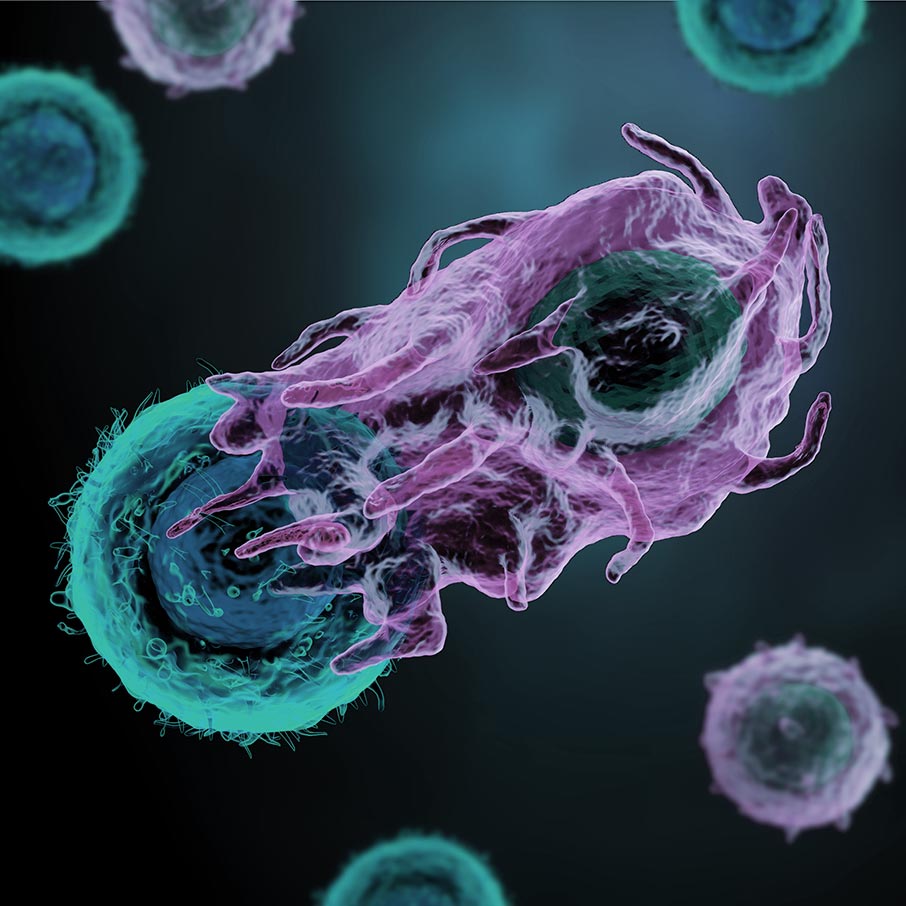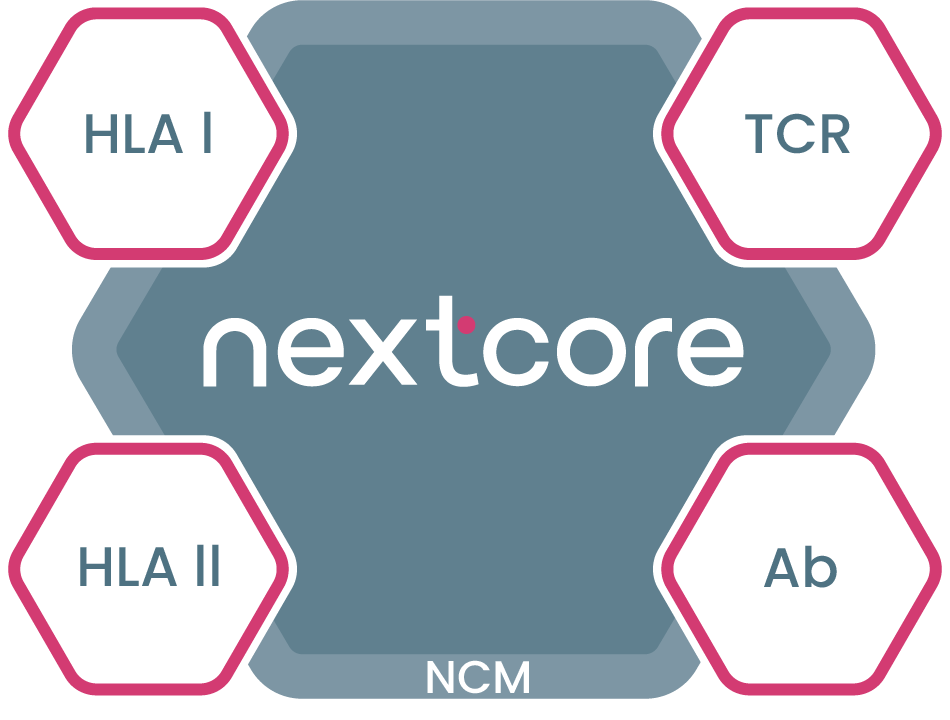The NextCore platform

The NextCore platform
NextCore – An integrated platform to develop novel precision drug candidates targeting the intracellular universe of disease antigens. The core of the platform is our unique and differentiated pIX phage display technology.
Harnessing the core of T cell immunity

T cells are the converging triggering and driving point in the immune cascade stimulated by HLA molecules displaying proteolytic peptide fragments from external and intracellular antigens – the pHLA complex. Thus, T cells are key components in orchestrating and mediating protective or aberrant immune reactions underlying health and disease.
NextCore uniquely unifies this target and drug space into a single industrial application building on next generation phage display technology.
NextCore-Ab and NextCore-TCR
The NextCore drug discovery platform enables both HLA-confined target identification and characterization of corresponding naturally-occurring or engineered immune receptors.
We have successfully developed highly target-specific and sensitive TCRs and TCR-Like antibodies towards cancer and autoimmune antigens suitable for both TCR and antibody-based therapies.
NextCore-HLAI and NextCore-HLAII
NextCore-HLA has a unique capacity to generate large combinatorial libraries of pHLA class I/II repertories, enabling target discovery and profiling by delineating the reactivity patterns and specificity of naturally-occurring or engineered pHLA targeting receptors, as found in their normal context on the surface of the living cell.

Key publications
Engineering T-cell receptor-like antibodies for biologics and cell therapy
Høydahl LS, Berntzen G, Løset GÅ. Curr Opin Biotechnol. 2024 Nov 2;90: 103224 (review)
DOI: 10.1016/j.copbio.2024.103224
Affinity maturation of TCR-like antibodies using phage display guided by structural modeling
Frick R, Høydahl LS, Hodnebrug I et al. Protein Eng Des Sel. 2022 Feb 17;35: gzac005
DOI: 10.1093/protein/gzac005
A high-affinity human TCR-like antibody detects celiac disease gluten peptide-MHC complexes and inhibits T cell activation
Frick F, Høydahl LS, Petersen J et al Sci Immunol. 2021 Aug 20;6 (62): eabg4925
DOI: 10.1126/sciimmunol.
B cell receptor ligation induces display of V-region peptides on MHC class II molecules to T cells
Huszthy PC, Gopalakrishnan RP, Jacobsen JT et al. Proc Natl Acad Sci U S A. 2019 Dec 17;116(51): 25850
DOI: 10.1073/pnas.1902836116
Targeting the MHC Ligandome by Use of TCR-Like Antibodies
Høydahl LS, Frick R, Sandlie I et al. Antibodies (Basel). 2019 Jun; 8(2): 32 (review)
DOI: 10.3390/antib8020032
Plasma cells are the most abundant gluten peptide MHC-expressing cells in inflamed intestinal tissues from patients with celiac disease
Høydahl LS, Richter L, Frick R et al. Gastroenterology 2019 Apr;156(5):1428-1439.e10
DOI: 10.1053/j.gastro.2018.12.013
Multivalent pIX phage display selects for distinct and improved antibody properties
Høydahl LS, Nilssen NR, Gunnarsen KS et al. Sci Rep. 2016 Dec 14;6:39066
DOI: 10.1038/srep39066
Phage display engineered T cell receptors as tools for the study of tumor peptide-MHC Interactions
Løset GÅ, Berntzen G, Frigstad T et al. Front Oncol. 2015 Jan 12;4:378 (review)
DOI: 10.3389/fonc.2014.00378
Next generation phage display by use of pVII and pIX as display scaffolds
Løset GÅ, Sandlie I. Methods 2012 Sep;58 (1): 40-6 (review)
DOI: 10.1016/j.ymeth.2012.07.005
